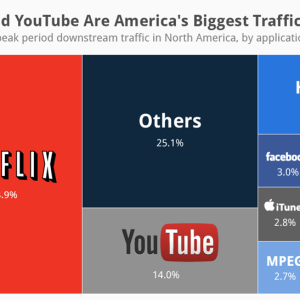Introduction
Unlocking the power of SEO breadcrumbs can catapult your website’s ranking to new heights. These ingenious navigational aids are a game-changer for users and search engines alike, illuminating the intricate architecture of your website with ease. Say goodbye to lost users and hello to seamless navigation as breadcrumbs pave the way to the desired destination with precision. In this comprehensive guide, we’ll unravel the mysteries of breadcrumbs, exploring their types, dissecting their impact on SEO, and providing step-by-step instructions on how to seamlessly integrate them into your WordPress site. Prepare to embark on a breadcrumb-laden journey of SEO enlightenment!
What Are Breadcrumbs In SEO?
Breadcrumbs play a pivotal role in Search Engine Optimization (SEO), serving as navigational clues that lead users back to previously visited pages with a simple click. By facilitating seamless retracing of steps, breadcrumbs alleviate the need to rely on the back button excessively.
Not only do they enhance user experience, but they also offer insights to search engines about the intricate structure of your website, potentially influencing its ranking. The strategic utilization of breadcrumbs in SEO contributes to the intricate tapestry of website design and optimization, where user-friendly navigation and search engine relevance intersect in a harmonious dance of digital dexterity.
For example, on a typical website’s page, the breadcrumb in SEO might look like this:
Why Are Breadcrumbs In SEO Important?

Breadcrumbs in SEO are not only important for usability, but they can also play a role in SEO. If implemented correctly, breadcrumbs can help improve your website’s click-through rate (CTR) and organic search traffic.
1. They help users navigate your website more easily
2. They help search engines understand your website structure
3. They can improve your website’s CTR
4. They can increase your website’s organic search traffic
If you are using a WordPress website, there are a few different plugins that you can use to add breadcrumbs to your site. We recommend Yoast SEO, which is a popular SEO plugin that includes breadcrumb functionality. Which we will discuss further in the article
Different Types of Breadcrumbs In SEO

Websites choose from different types of breadcrumbs, depending on their needs. The most popular types are:
Location-Based Breadcrumbs: Show the user’s current location within a hierarchical structure. For example, on a website about books, the location-based breadcrumb might look like this: Home > Books > Fiction.

This means the user is currently viewing the page for fiction books.
Product-Based Breadcrumbs: Help users find products faster by showing the path from the home page to the product page. For example, on an online store that sells shoes, the breadcrumb might look like this: Home > Men’s Shoes > Running Shoes.
Attribute-Based Breadcrumbs: Use attributes to show the user’s current location. For example, on a website about books, the attribute-based breadcrumb might look like this: Books by Genre > Fiction.

Path-Based Breadcrumbs: Show the path the user took to get to the current page. For example, on a book-based website, the path-based breadcrumb might look like this: Home > Books > Fiction > The Hobbit.
History-Based Breadcrumbs: It is a navigation of the path took and to go back to the results from which the user has navigated from.

Knowing the types of breadcrumbs available can help you decide which one is right for your website.
Breadcrumbs and SEO
The symbiotic relationship between breadcrumbs and SEO is undeniable. These navigational aids not only assist search engines in comprehending the intricate structure of your website, but they also have the potential to impact your site’s ranking. But that’s not all! Breadcrumbs can also play a pivotal role in enhancing click-through rates (CTRs) and mitigating the dreaded bounce rate.
Maximizing the potential of breadcrumbs in SEO requires finesse. First and foremost, ensure that the breadcrumb trail is intuitively laid out, allowing users to effortlessly retrace their steps without succumbing to confusion. Infusing breadcrumbs with keywords relevant to your website’s content can also significantly augment search engine understanding and boost your site’s ranking prowess.
Incorporating rich snippets into your breadcrumb strategy is another power move. These code snippets offer a treasure trove of additional information about your website, elevating your click-through rate (CTR) and overall user engagement. Visibility is key as well, with the breadcrumb trail being prominently displayed without requiring users to scroll down the page.
Embracing the full potential of breadcrumbs in SEO can be a game-changer for your website. Don’t let this opportunity slip through your fingers. It’s time to harness the might of breadcrumbs and propel your website to new heights of search engine prominence. Let your website’s structure be an intricate tapestry woven with breadcrumbs, guiding users and search engines alike on a journey of discovery.
How To Add Breadcrumbs To A WordPress Site
There are several plugins available online to add breadcrubs to your WordPress website easily. We recommend using the Yoast SEO plugin. It’s free, easy to use, and includes all the features you need.
Installing and Activating Yoast SEO plugin:
1. Log into your WordPress website and visit the Dashboard.
2. Click on Plugins and then Add New.
3. Search for Yoast SEO and then install and activate the plugin.
Once you’ve installed and activated the plugin, follow these steps to add breadcrumbs to your WordPress site:
1. Go to the SEO tab in the left-hand sidebar and click on Breadcrumbs.
2. Tick the box next to Enable breadcrumbs.
3. Choose a separator between the breadcrumbs. We recommend using a > or /.
4. Choose where you want the breadcrumbs to appear on your website. The default location is before the content, but you can also choose to display them after the content, in the RSS feed, or an HTML5 tag.
5. Click on Save Changes.
And finally you have successfully integrated breadcrumbs in your website strategy.
Breadcrumbs not only aid users and search engines in comprehending the intricate structure of your site but also serve as a compass, leading users with precision to their desired destination. But breadcrumbs are more than just navigational tools; they wield a potent impact on SEO, enhancing your website’s visibility and search rankings.
Benefits of Using Breadcrumbs In SEO
We have already discussed the importance of using breadcrumbs – which can help improve your website’s SEO in several ways:
Not only can they help your website ranking but also reduce the bounce rate and improve CTRs but the story does not end here.
Breadcrumbs in SEO are a clever way to make your website easier for both users and search engines. They can also help you rank higher in Google’s SERPS by directing people straight towards what they’re looking for!
A simple site structure with well-established breadcrumb trails will give any business an edge over competitors who lack this helpful tool to improve their ranking on the internet today.
Breadcrumbs in SEO are an easy way to show your visitors which pages they’re on and what links lead off from each one. You can use them as a navigation aid, or just have some text that tells people where things go next if there isn’t anything else linking together related posts in categories like “Home,” “Articles” etc… If you don’t mind adding this small extra step then we recommend going ahead with bread CRAGMs because those will help keep everything organized while still looking good!
What Are Bread CRAGMs?
Bread CRAGMs, an acronym that stands for “Clickable Real-time Automatic Google Maps,” is a revolutionary solution for presenting contextual data regarding a specific location on a website by leveraging graphical images interconnected with hyperlinks. The underlying concept is akin to a traditional physical map; however, the implementation is entirely web-centric, resulting in a novel digital experience that defies traditional boundaries.
How to Add Bread CRAGMs to a WordPress Site
The process is relatively straightforward, and there is an abundance of plugins available to help you get started. For optimal results, we recommend utilizing the Google Maps plugin, a free and user-friendly tool with a comprehensive suite of features to suit your specific needs.
Installing and Activating Google Maps plugin:
1. Log into your WordPress account.
2. Go to the Plugins menu and click Add New.
3. In the Search plugins box, type in Google Maps.
4. Find the Google Maps plugin by WebDorado and click Install Now.
5. After the plugin has been installed, click Activate Plugin.
6. Configure the plugin by going to Settings > Google Maps.
7. Follow the instructions on the screen to get your API key.
8. Once you have your API key, paste it into the API Key field and click Save Changes.
9. That’s it! You’ve successfully installed and activated the Google Maps plugin.
To add bread CRAGMs to your WordPress site, go to the post or page where you want to add the bread CRAGMs.
1. In the content editor, click on the bread CRAGMs icon.
2. Enter the address of the page you want to link to in the URL field.
3. In the Link Text field, enter the text you want to display for the link.
4. Click Insert into post.
That’s it! You’ve successfully added a bread CRAGMs to your WordPress site and now your users can easily navigate your site.
5 Breadcrumbs In SEO Best Practices
Now that you know what breadcrumbs in SEO are and how to add them to your WordPress site, let’s take a look at some best practices for using breadcrumbs. Learning these helps you to use breadcrumbs in SEO more effectively and avoid any potential issues.
1. Descriptive link text is key
When it comes to crafting breadcrumbs, don’t skimp on the link text’s descriptive potential. This is the text that appears between the links, and it plays a critical role in helping users understand their current position on your site. For instance, if you have a blog post about SEO, your breadcrumb trail might look like this:
Home > SEO > Improve Your SEO With Breadcrumbs
2. Keep the breadcrumb trail short
It’s essential to keep your breadcrumb trail succinct to avoid overwhelming your users with extraneous information. Lengthy breadcrumb trails can confuse users and lead to a less-than-optimal experience. As such, it’s recommended to limit the number of links in your breadcrumb trail to no more than four or five.
3. Use breadcrumbs on all pages
For optimal results, breadcrumbs should be implemented throughout your website and not just on the homepage. Doing so provides users with a comprehensive understanding of your website’s structure and simplifies navigation.
4. Add breadcrumbs to your XML sitemap
In addition to adding breadcrumbs to your website, you should also add them to your XML sitemap. This helps search engines understand the structure of your site and index your pages correctly.
5. Use keyword-rich breadcrumb text
Finally, to bolster your site’s SEO, it’s essential to use keyword-rich text in your breadcrumb trail. Doing so increases the likelihood of your pages appearing in user search queries, driving more traffic to your site.
In conclusion, incorporating breadcrumbs into your website is an effective way to improve user navigation and SEO. However, it’s vital to implement them correctly for optimal results.
Conclusion
With these tips in your arsenal, you can optimize your breadcrumb trails to make them a powerful tool in boosting your website’s search engine ranking. Thanks for taking the time to read this guide – we hope you found it helpful in your breadcrumb-related endeavors.
In case you’re finding it challenging to get started, consider hiring an agency with the expertise to guarantee your website’s success right from the get-go.
If you’re interested in expanding your SEO knowledge base, our complete guide to SEO is worth checking out. It covers a wide range of topics, from keyword research to link building and beyond. Alternatively, give us a call at 12 Channels and our subject matter experts will be happy to assist you.


























1 thought on “Breadcrumbs In SEO: Easy Tips, Tricks, & Hacks”
A guide that covers the basics of breadcrumbs, how to implement them on a website, and their impact on user experience and search engine optimization.